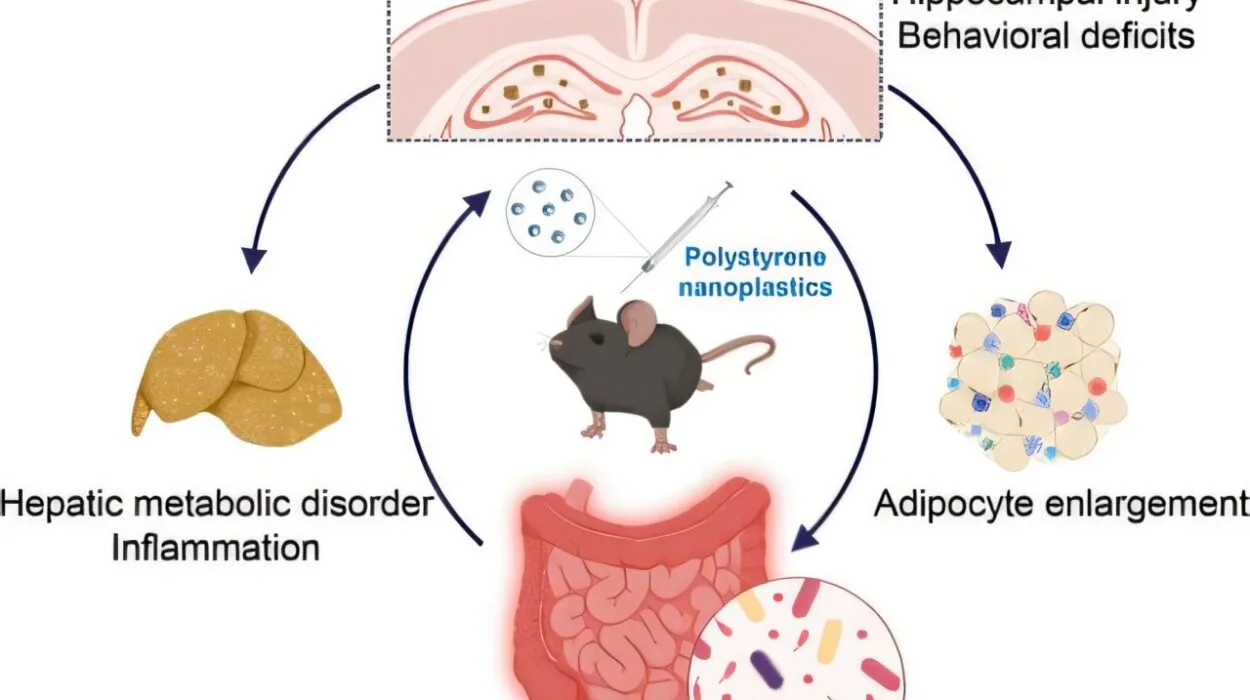If you’ve ever dragged yourself through a workout and wondered why your body suddenly feels like it’s moving through molasses, even though you aced that same routine a week ago, the answer might lie in your hormones. Women are not small men, as exercise physiologist Dr. Stacy Sims famously declared. Yet, traditional fitness programs often treat women’s bodies as if they function the same way, day in and day out. That’s far from the truth.
Your menstrual cycle isn’t just about your period. It’s a finely tuned hormonal symphony that influences everything from your energy levels to your motivation, mood, strength, endurance, and even your risk of injury. Learning how to tailor your exercise routine to the different phases of your cycle isn’t just about optimization—it’s about honoring your biology. And once you align your workouts with your hormones, you might just feel stronger, leaner, more energized, and more in control than ever before.
Let’s take a deep dive into how your menstrual cycle affects your workouts and how you can work with your body—not against it—to get the most out of every rep, run, or stretch.
Understanding the Phases: What Your Hormones Are Up To
Before we break down the movement magic, let’s understand what’s happening under the surface. The menstrual cycle is divided into four main phases: the menstrual phase, follicular phase, ovulatory phase, and luteal phase. Each phase brings a unique hormonal landscape that affects how you feel, move, and perform.
During the menstrual phase (days 1–5, approximately), your estrogen and progesterone levels drop sharply. This is when bleeding occurs, and many women feel fatigued, crampy, and less motivated to work out. It’s often a time for gentle, restorative movement rather than high-intensity training.
Next comes the follicular phase (days 6–14), when estrogen begins to rise and your body starts to feel more energized. This phase culminates in ovulation (around day 14), when estrogen peaks and you may feel your strongest, sexiest, and most athletic. Your body is primed for performance.
Then enters the luteal phase (days 15–28), where progesterone takes center stage. Energy levels can vary wildly here. Some women feel calm and stable, while others experience PMS symptoms, bloating, mood swings, or fatigue, especially as menstruation approaches again.
Understanding these internal shifts is the key to unlocking your best workout results. It’s like having an internal GPS for your fitness plan—one that can guide you toward effort when it counts and rest when it’s needed.
Menstrual Phase: Embracing Rest and Reconnection
When your period arrives, it can feel like your body is requesting a full system reboot. Bleeding begins, estrogen and progesterone levels are at their lowest, and fatigue is common. It’s a time when many women feel most introverted, physically vulnerable, and emotionally sensitive. And yet, this is also a time when we’re taught to “push through it” and stick to our regular routines.
But your body is shedding its uterine lining—a biological feat that takes energy. Instead of seeing this phase as a weakness, consider it a built-in invitation to slow down and restore. That doesn’t mean ditching movement entirely. In fact, gentle movement can help ease cramps, boost mood, and relieve menstrual tension. Yoga, walking, stretching, or light swimming can feel nourishing. Some women find strength training during their period oddly stabilizing, as pain receptors may be less sensitive. But for most, this is not the time for PRs or high-intensity intervals.
This phase is also a great opportunity to tune into your body’s cues. If you feel completely depleted, rest. If you crave motion, go for something that restores rather than depletes you. Think of it as a time to recalibrate and set intentions for the new cycle ahead.
Follicular Phase: Time to Build and Bloom
After your period ends, your energy starts to rise like a sunrise on a clear day. Estrogen is climbing, testosterone starts to make an appearance, and your brain feels sharper. This is a time of renewal—not just hormonally, but mentally and physically. You’re more likely to feel motivated, focused, and adventurous. It’s like the perfect recipe for crushing workouts.
Your body is better equipped to build muscle during this phase, thanks to improved insulin sensitivity and higher estrogen levels, which support muscle growth and repair. You might find that your endurance improves and your recovery time shortens. It’s a great time to lean into resistance training, HIIT workouts, and trying new fitness challenges. Your mental stamina is also peaking, so pushing through tough circuits or long runs feels more satisfying than draining.
Coordination, reaction time, and motivation are all firing on multiple cylinders during the follicular phase. It’s your window of opportunity to go harder, lift heavier, and stretch your limits. You’re not just working out—you’re evolving.
Use this time wisely. Set new goals. Try a new class. Challenge your personal records. Your body is ready for it, and you’re likely to feel the glow of progress when you align your training with this hormonal upswing.
Ovulatory Phase: Peak Power and Playfulness
When ovulation hits, usually mid-cycle, your body is at its hormonal high point. Estrogen and luteinizing hormone spike, giving you a surge in strength, power, and confidence. Many women feel an almost magnetic sense of vitality. You might notice increased libido, better skin, and a more sociable demeanor. But what’s really exciting from a fitness perspective is that your athletic performance potential is at its peak.
You may find you can lift heavier, run faster, or hit a more advanced yoga pose with greater ease. Your pain tolerance is also higher during ovulation, which makes this the perfect time to lean into strength training, explosive power movements, or high-intensity intervals. Whether you’re sprinting, boxing, climbing, or lifting, this phase supports maximum physical output.
However, there’s a caveat: your ligaments become more lax due to hormonal changes, which may slightly increase your risk of injury, especially to the knees (a common issue in female athletes). So while you’re feeling superhuman, be sure to prioritize warm-ups, cool-downs, and proper form.
The ovulatory phase is also socially and emotionally uplifting, making it a great time for group classes, outdoor runs with friends, or dance-based workouts. You’re likely to feel more magnetic and expressive, so let your workouts mirror that energy—playful, bold, and unrestrained.
Luteal Phase: Listening to the Slowdown
As ovulation passes, progesterone rises and your energy begins a slow descent. The luteal phase is often the trickiest to navigate, physically and emotionally. You might feel more tired, heavy, bloated, or irritable—especially in the days leading up to your period. Yet this is also a phase where you can gain new insight into your resilience, both physically and mentally.
Your body shifts into a slightly higher metabolic state during the luteal phase, which means you burn more calories at rest. You may feel hungrier, and that’s normal. Honor your appetite, but focus on quality nutrition to stabilize blood sugar and support mood. Hydration becomes especially important, as progesterone can increase water retention and affect thermoregulation, making you feel hotter or more dehydrated during workouts.
Your strength and endurance may feel inconsistent, but that doesn’t mean you need to retreat from exercise entirely. Moderate intensity is the sweet spot here. Think steady-state cardio, circuit training, or Pilates. Some women also find solace in slower strength workouts with lower weights and higher reps. If PMS symptoms are strong, you might scale back to walking, stretching, or mind-body classes like tai chi.
The luteal phase is also a powerful time for emotional insight. Journaling, breathwork, or meditative movement can help you process the emotional shifts that often arise in this phase. Let your workouts become a safe place to connect to your intuition, not just your strength.
Breaking Free from the “No Pain, No Gain” Mentality
In a fitness culture obsessed with grind, hustle, and pushing harder, aligning your workouts with your menstrual cycle can feel countercultural. But the truth is, honoring your body’s rhythms isn’t about doing less—it’s about doing better. You’re not weak for needing rest. You’re not inconsistent for feeling different from one week to the next. You’re cycling through a brilliantly complex hormonal process every single month, and that deserves acknowledgment—not shame.
When you embrace your cycle as a tool rather than a nuisance, everything changes. Your workouts start to feel more intuitive. You stop fighting your body and start flowing with it. And that’s when the real magic happens—when strength meets self-awareness, and performance meets peace.
It’s time to retire the one-size-fits-all approach to fitness and embrace a model that’s biologically aligned and deeply empowering. Because your body is not the same every day, and your workouts shouldn’t be either.
How Tracking Your Cycle Enhances Your Fitness Strategy
If you’re intrigued by the idea of syncing your workouts with your cycle, the first step is awareness. Begin by tracking your cycle—not just your period, but your energy levels, mood, sleep, and how you feel during different workouts. There are plenty of apps that can help, or you can go analog with a journal. Over time, you’ll start to see patterns emerge, and those patterns become your personal fitness blueprint.
Knowing which phase you’re in gives you the power to plan your workouts more effectively. You’ll stop beating yourself up on days when your energy dips, and you’ll know when to push for progress. Cycle tracking also allows you to set realistic goals and prevent burnout. It fosters a deeper relationship with your body—one rooted in trust, respect, and rhythm.
Menstrual Cycle Training and the Future of Women’s Fitness
More and more athletes, trainers, and fitness experts are embracing the science of menstrual cycle training. Research is growing, and so is the recognition that women’s bodies operate on a monthly rhythm that deserves attention and respect. This isn’t just a wellness trend—it’s a shift toward inclusive, intelligent training that puts women’s biology at the center of the conversation.
In the future, we may see menstrual-cycle-informed programming become the norm, not the exception. Personal trainers will ask where you are in your cycle before designing a plan. Group classes might offer modifications based on hormonal shifts. Wearable tech may even sync with your body’s cycle to offer personalized insights in real time.
Until then, you have the power to start that revolution in your own life. By syncing your workouts to your menstrual cycle, you’re not just changing your fitness—you’re changing your relationship with your body.
Conclusion: Strength Rooted in Cycles, Not Schedules
Your body is cyclical. It pulses with an ancient intelligence that’s often overlooked in modern training culture. But when you begin to move in harmony with your hormones, everything shifts. Your workouts become more joyful, your progress becomes more sustainable, and your relationship with your body becomes rooted in compassion instead of criticism.
Exercising according to your menstrual cycle isn’t about being ruled by your hormones—it’s about being informed by them. It’s about knowing when to sprint and when to stretch, when to lift and when to let go.
So the next time you lace up your sneakers, take a moment to ask your body what it needs today. Not what your calendar says, not what your gym buddy is doing—but what your own, beautifully intelligent biology is whispering to you.
That’s where your true strength lies.






